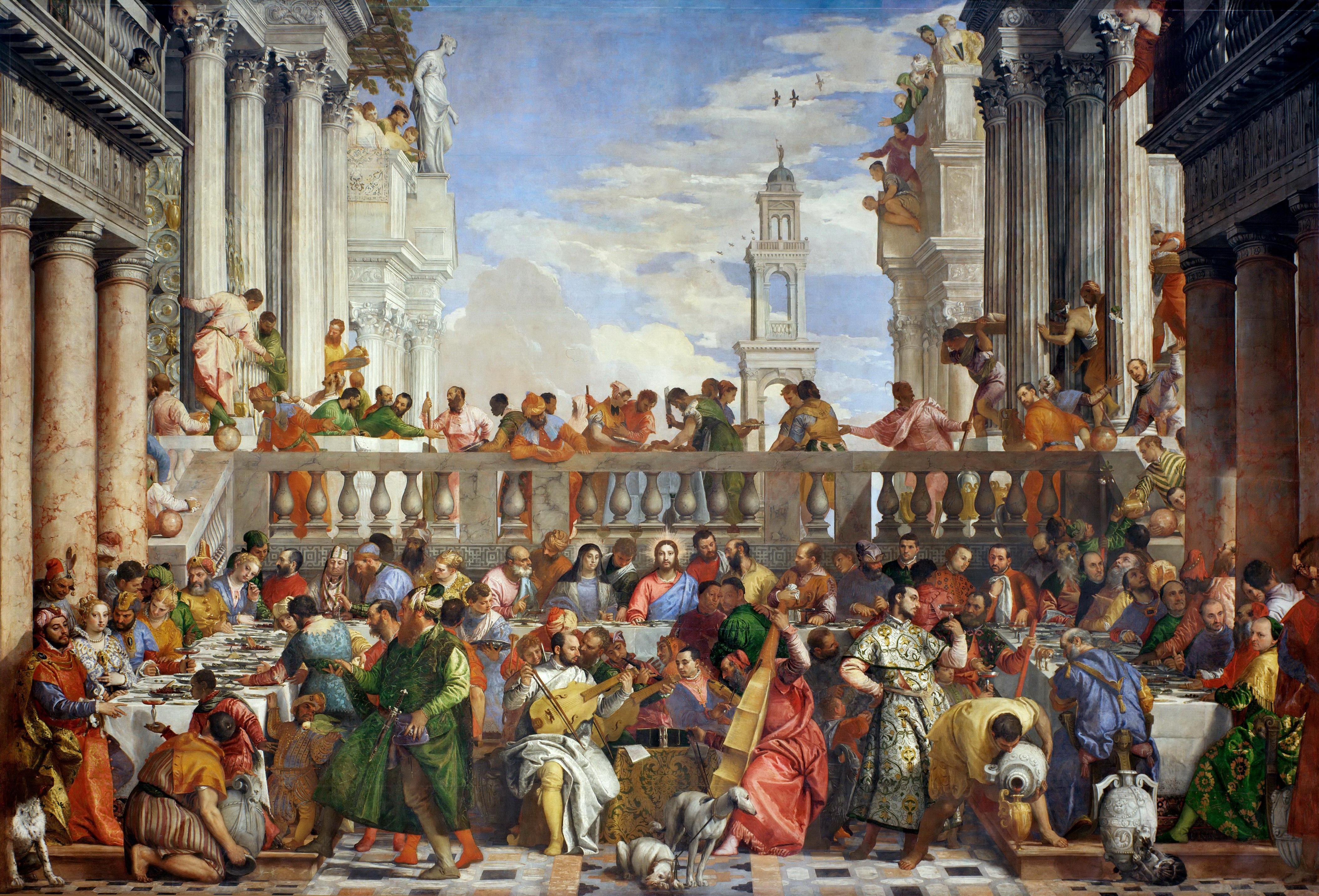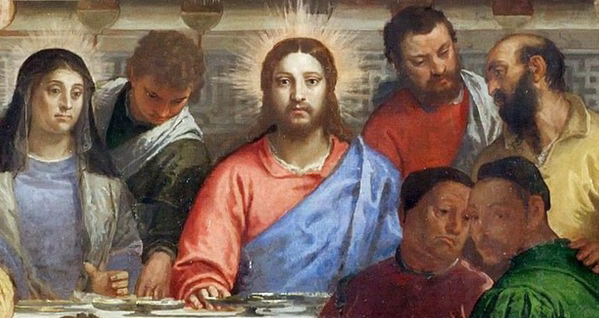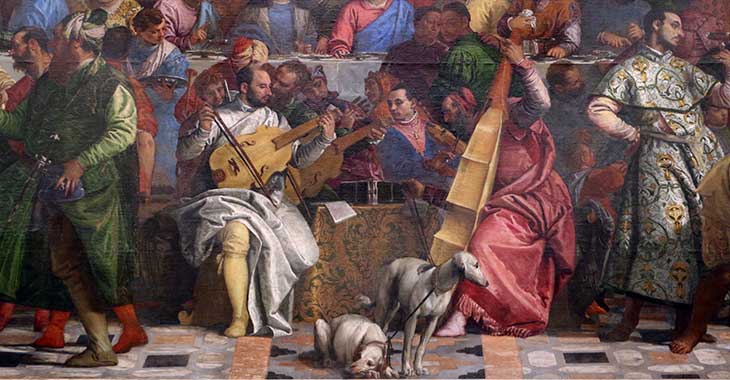
The Wedding at Cana by Paolo Veronese, exhibited at the Louvre, is a work of art that fascinates and surprises visitors with its enormous size and richness of detail.
The painting is displayed in a room that everyone at the Louvre passes through and where, indeed, one probably spends more time as it is the Mona Lisa room.
If you went to the Louvre, you cannot have failed to admire this work by Veronese during the endless queue waiting to stand in front of Leonardo’s more famous Mona Lisa.
In this article, I explain the characteristics and curiosities of this work, providing a unique perspective on Veronese’s masterpiece and inviting you to discover its beauty during your visit to the Louvre.
Paolo Veronese’s Wedding at Cana in the Louvre: description and curiosities

Paolo Veronese, Nozze di Cana (dettaglio)
The Marriage at Cana by Paolo Veronese has been part of the Louvre’s collection of works since 1798 and comes from the refectory of the Benedictine Convent on the island of San Giorgio Maggiore in Venice.
DESCRIPTION OF THE WEDDING OF CANA BY PAOLO VERONESE
This is an impressive oil painting on canvas, executed between 1562 and 1563.
These are the years in which the artist produced a series of large-format paintings, generally referred to as the ‘Dinners’, one of the most famous of which is Paolo Veronese’s Last Supper, which became the Supper at Levi’s House, part of the collection of the Gallerie dell’Accademia.
Veronese depicts the biblical scene of the Wedding at Cana, in which Jesus performs the miracle of turning water into wine during a wedding banquet. The work is remarkable for its size but also for the multitude of characters present and the magnificence of the setting.
Paolo Veronese employs techniques of a theatre set designer and uses a structure that is typical of the world of show business, with multiple scenes and a proscenium where the main action takes place. Features that can also be seen in Paolo Veronese’s other, more famous works.
At the centre of a scene in which numerous characters move, argue and fidget appears Jesus, accompanied by Mary and the Apostles.
With a width of over nine metres and a height of over six metres, Veronese uses a rich and dynamic composition, distributing the figures against the architectural backdrop of a rich Renaissance palace. The bright colours and masterful use of light create a festive atmosphere and a feeling of movement within the scene.
SOME CURIOSITIES ABOUT PAOLO VERONESE’S WEDDING OF CANA
According to tradition, Veronese depicted a number of contemporary characters, including himself. His portrait would be present in one of the lute players in the central part of the work.
The other musicians in the foreground would also be portraits of some famous Venetian artists: Titian is probably the musician with the double bass, Tintoretto with the second viola and Jacopo Bassano is the musician with the violin.
Historical documents provide us with useful information on the dates of the work’s creation and its arrival in Paris. We know with certainty that Paolo Veronese signed the contract for the creation of the work with the Benedictine monks on 6 June 1562. On 6 October of the following year, the artist signed the receipt of payment and this gives us important information because it means that the work had been completed and delivered on that date.
It was instead in 1797 that Paolo Veronese’s Wedding at Cana was removed from the refectory of the Benedictine Convent on the island of San Giorgio Maggiore in Venice, to arrive in the Louvre the following year.

Paolo Veronese, Nozze di Cana (dettaglio con musicisti)
The Marriage at Cana by Paolo Veronese in the Louvre is a work of unparalleled grandeur and beauty. The richness of the details, the mastery of the composition and the vividness of the colours are just some of the elements that make this painting extraordinary.
One of the must-see museums in Paris is the Louvre, but there are many other, lesser-known museums that hold true masterpieces. To find out more about other museums to visit go to the What to See in Paris page, where you will find the museums, exhibitions and places you should visit.

